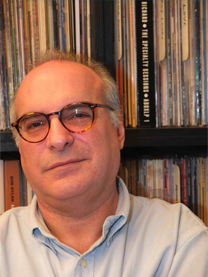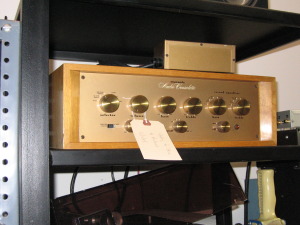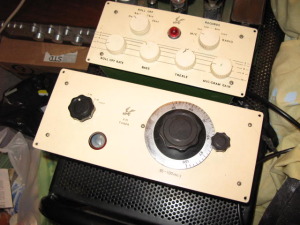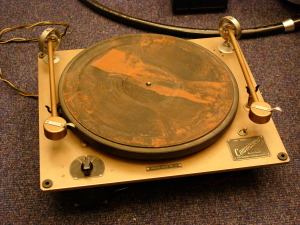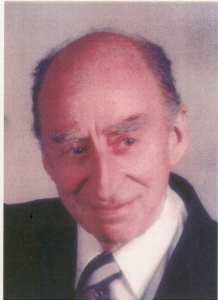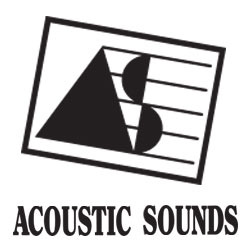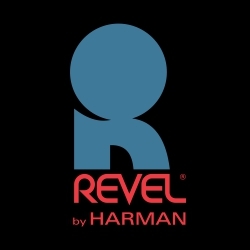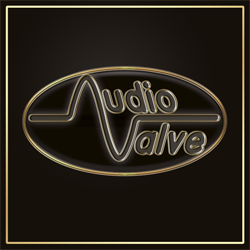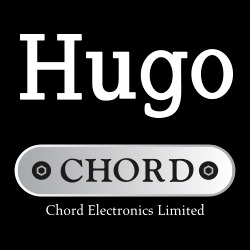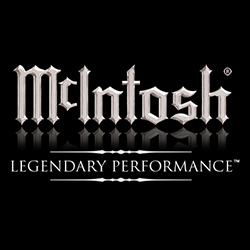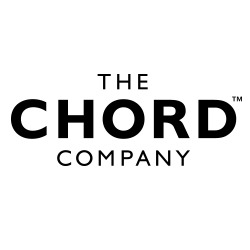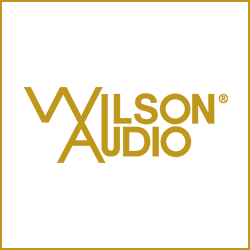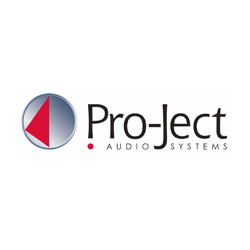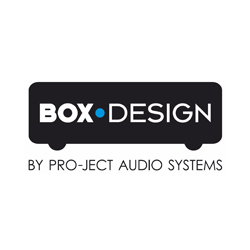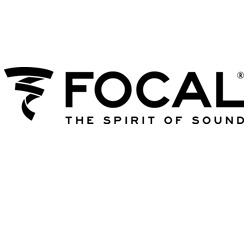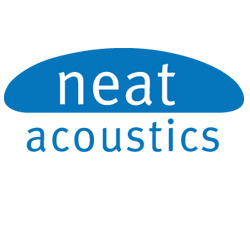So rapidly do things turn around in the world of music playback – the all-conquering iPod is younger than a decent wine – that it’s almost mandatory to review hi-fi’s first half-century in half-decade blocks. There’s nothing arbitrary about the 50-year first measure because prior to the launch of stereo playback via LP and tape in the mid-1950s, what passed for hi-fi resembled a disassembled console or ‘radiogram’. What we regard as ‘hi-fi’, then, is roughly 50 years old, Stan Kelly writing in The Hi-Fi Yearbook that ‘1958 will go down in history as the first year of stereo – at least insofar as pick-ups are concerned.’
This is not to dismiss the previous half-century’s developments, and any broadminded audio historian would certainly count a number of pre-WWII components as worthy of even today’s systems, albeit doubled-up to create the two-channel playback we deem as the norm. Voigt’s horns, the earlier efforts from Lowther, Acoustical, Wharfedale and Tannoy – any visitor to one of John Howes’ audio jumbles could easily piece together a system made up entirely of pre-1940 components (if he or she found two of each) that would dazzle even a modern listener born in the primarily-digital era, post-1983.
(Note to the post-Phil Spector mono-revivalists among us: I’m not dismissing single-channel sound, and regular readers know I love mono to bits. But mono-maniacs are an even smaller, crankier minority than, say, die-hard vinyl users. An ode to mono will have to wait for another time….)
It is crucial to emphasise that the activity of the immediate post-war years formed the foundation of all that we now hold dear. From 1945-1955, or the end of the war until the commercial realisation of stereo 10 years later, the pioneers of the industry, in a massive wave, combined a number of disparate elements that would set the stage for all that would follow in consumer electronics.
While this particular hawk isn’t about to state a case for war-mongering, research during WWII yielded countless peace-time benefits, in precisely the same way that the space programme gave us Velcro. Among the many tools and opportunities the military provided those adventurous audio enthusiasts were plentiful parts, new valve types, all-new materials including plastics and lubricants, tape-recording technology, and others.
Most important of all were two utterly disparate by-products, not least a crash-course education in advanced electronics courtesy of the military. Not one single individual who was a cornerstone of 1950s audio design was entirely exempt from this; even those who served in civilian roles throughout the war probably contributed to the war effort in manufacture or research. A perfect example of direct military influence was the legendary Stan Kelly, who told me more than once how much he benefitted from working on radar in its early days, while existing manufacturers – including Garrard and Tannoy – certainly produced materiel for the war effort.
A second by-product of WWII, which first emerged in the USA and only much later in the UK, was a change in society that meant greater disposable income and an attainable desire for life’s comforts. The prosperity of the 1950s, even though initially restricted to the USA, still had global impact because it enabled the populations of countries which were slower to recover to export their wares to the Americans. The UK, followed by Germany and, later, Japan, would have taken much longer to convalesce had it not been for the hunger of the US marketplace, for everything from automobiles to, yes, audio equipment.
Here in the UK, alas, rationing went on far longer than it should have for one of the two main countries that liberated Europe, and which should have enjoyed some earlier reward for standing up to Hitler. But while the UK home market was absorbing as much as it could of local production, surplus manufacture was never a problem: canny manufacturers were doing their best to export their wares, and most British music lovers would be surprised to learn how familiar older American audiophiles (now in their late-60s and beyond) were with classic British brands, such as Quad, Tannoy and Decca.
Everything came together with the advent of slightly more affordable components in the mid-1950s, along with the arrival of the vinyl LP. And while it is preposterous to describe the arrival of the stereo LP as an event with the initial commercial impact of DVD, let alone the iPod, in retrospect, its importance is probably greater as regards quality. Sheer numbers would contradict that – 22 million iPods were sold in the last quarter of 2007 alone – but the LP did something the iPod inadvertently undermined a lifetime later: stereo and the LP elevated the sonic veritism of music playback in the home to previously unattainable levels.
If you therefore place the LP in the category of educating consumers to accept higher standards, by liberating music lovers from low-fi radio or fragile, usually mid-fi 78s, then you are freed of simply unit sales as a yardstick. In contrast, all the iPod did was offer portability and convenience, at the expense of sound quality. Analogies are limitless, and we can spend the rest of this story citing film vs digital photography, wine in bottles vs wine in boxes, ad infinitum, but that’s all it boils down to in the end: a case of quality or crud. In other words, do you want, at the cost of convenience, sound quality in your home that’s as close to reality as it gets, or modulated noise via crappy headphones? Sadly, today the majority favours the latter.
In the second-half of the 1950s, however, the UK market was tightly defined, popular tastes were of a higher standard, literacy probably was, too. The cultural role models of the day still retained the qualifications of Ruskin and Arnold rather than what we suffer in this era, viz. a Jonathan Ross or a Posh Spice. Equally, purchasing power on the whole was restricted by income, obscene purchase taxes and high import duties. Most would crumble under the globalisation of the 1960s.
Intriguingly, what we now see is that the 1950s was the last decade when the British market for audio components was almost solely UK-made, with imports restricted by prohibitive pricing. So different was this market from the other primary arena for hi-fi design and consumption – the USA – that a colleague across the Pond writing a similar history for an American audience would produce a study with virtually no overlap of brands. And even though I stated above that Americans knew and could purchase key British products, availability was restricted to sophisticated territories such as Manhattan, and then only to a hard core of savvy audio fanatics.
Early issues of Hi-Fi News – the only hi-fi magazine in the world that survives from that period – and the annual Hi-Fi Yearbook published by HFN’s founder confirm the dearth of foreign products. As late as 1959, the only imported models listed in the latter, despite the huge successes across the Atlantic of McIntosh, Marantz, Fisher, Scott, AR, Harman-Kardon and others, were a smattering of mainly European brands: Philips, Thorens, Ortofon, Bang & Olufsen and Elac for turntables, arms or cartridges, some amps from early multinationals such as RCA, and a selection of German-made tape decks from Telefunken and others.
Which is not to say that the selection was limited. So fecund has this country always been when it comes to the manufacture of electronics – Marconi did his best work here, it should be remembered, as did Blumlein, the godfather of just about everything – that the only country to offer as much prior to the emergence of the Japanese was the far larger and wealthier USA. As a result, even the very first Hi-Fi Yearbook of 1956 ran to 180 pages, and it was bursting with clever components in every sector.
Setting the scene for the 1950s requires a leap of imagination for those living at a time when a company with the peerless reputation of Sony can offer an upscaling DVD player for only £50. £50 of 2008 money is equal to £2 7s in 1956 money, according to the Retail Price Index, which is the least flamboyant or melodramatic of measures (e.g. as a share of GDP, £2 7s is nearly £180). To show just how severely prices have dropped in real times, £2 7s did not buy the equivalent of a whole source component. It was the price of an Acos tonearm.
Without going into wage structures, suffice it to say that even £2 7s was a lot of money, whereas today’s teenagers would sneer at £50 for a pair of trainers. What the humiliating wages in the 1950s meant for audio enthusiasts was a two-tier approach to hi-fi. A precious few could afford the best components and systems, mainly professionals such as doctors and lawyers, and the rest made do with either all-in-one radiograms or did what we no longer do: built systems from scratch or kits.
A later instalment will target the point where kits were no longer feasible if saving money was the impetus, primarily after mass-production from Asia brought down prices to a point where as of 2008 nearly all UK manufactured goods are living on borrowed time. Back then, it was worth building one’s system in a monetary sense.
When asked, ‘Was the home constructor market more important than the assembled-unit market in the mid-1950s?’, Stan Kelly remarked, that ‘In terms of real hi-fi, yes, because with the exception of QUAD and one or two others, you couldn’t buy a complete system made up of separate components [from one brand]. You had to go to a specialist hi-fi dealer who had a range of amplifiers, a range of tuners, a range of speakers and hope that he’d got the right combination.’
Both whole units and raw components were sold side by side. In four years, The Hi-Fi Yearbook would grow by 50 pages, and the number of models on offer would more than double, one of the more impressive sections being bare speaker drivers. Magazines of the day also expose a third characteristic of the era, to consider alongside high prices and the popularity of DIY assembly was the longevity of specific models.
It must have been reassuring for a normal wage owner who scrimped and saved to afford, say, a Leak tuner, to know that it wouldn’t be obsolete in nine months. Additionally, the sheer inventiveness and decency of companies like Leak, Quad and others ensured that the transition to stereo would be eased by the arrival of add-on stereo decoders for mono FM tuners, along with a host of other accessories for converting one channel to two.
Without even delving into the most obscure brands of the day, the rarely seen, mainly forgotten items that don’t create a wave of hysteria at audio fairs, we can see that the music lover of a half-century ago didn’t suffer from a lack of quality in the last decade of the all-valve era. Aside from monetary constraints, it was a period marked by a level of absurdly high performance. Cheap manufacture and planned obsolescence would come much later; today, it’s the norm for, say, an MP3 player’s price to halve within three months of its launch, superseded by something ‘better’.
At the top of the heap were the giants of the era that still trade in one form or another today, with the primary exceptions of Goodmans and Leak. The well-heeled music lover would have aspired to an all-Quad system, and he would have simply added another Quad II and Quad ESL to his existing mono set-up, probably swapping his pre-amp for a stereo edition while adding a stereo decoder to his mono tuner. As the continuing adoration for the original Quad speaker demonstrates, this was a system capable of all the virtues held dear by music lovers throughout the last half-century, save for two more modern concerns: the inability to deliver threshold-of-pain playback levels and foundation-rattling bass.
As Peter Walker explained in 1994, the various markets were far more dissimilar then than they would be four decades later. ‘We had a very, very good review in America, a man came over and he said it was “most wonderful but it’s not loud, it doesn’t shake the windows. But it gives the most natural reproduction by a wide margin, more than we’ve ever heard before.” And that got us some orders from America, some orders came in. But it wasn’t very good with American high-powered amplifiers, which would just bust ‘em, spark ‘em to bits.
‘Americans had larger rooms, their whole basements given over to hi-fi and it had to be pretty loud. And the poor old ESL wouldn’t do that.’
For those who did fall in love with the Quad system, it was likely that they would play records with a Garrard 301 ‘motor unit’ (£19 plus tax) or – if that was too rich – a Collaro Model 2010 for £13 6s 6d plus tax. A.R. Sugden’s Connoisseur Transcription Motor was another favourite, which actually cost slightly more than the Garrard, thouigh it would alter be known for a turntable kit. All bore a whiff of the broadcast studio about them, with form following function and robustness a given.
While many companies could offer a matching arm, the market then as now featured a number of specialists in the decade before SME would sweep all before it. ‘Wild’ and ‘varied’ best describe some of the models on offer, with Burne-Jones’ BJ Super 90 MK tonearm typical of the lack of restraint shown by designers: it attempted to counter tracking error with a pivoting head arranged on a pair of parallel, pivoting arm tubes. At £12 15s, it was not cheap by any means. Curved, straight, massive, lightweight: all had to cope with cartridges (a.k.a. pick-ups or heads) that are massive by today’s measure.
Yet cartridge selection, too, was fairly healthy. Moving coils, variable reluctance types, ceramics – the main point of difference between the cartridges of the 1950s and those of today was tracking force, with the very finest needing 3g-4g pressure, with 8g not uncommon. An audio time-traveller, though, would have found solace with cartridges from Goldring (the variable reluctance types remembered fondly), Decca FFSS and the Ortofon moving-coil still available in the next century.
Of course, LP and 78 playback weren’t the sole sources of the day, with radio being especially popular because one needn’t buy software – just pay a license fee. The tendency was to purchase the tuner that matched one’s pre-amp, but that might have caused a dilemma: the Quad user after superior FM reception would be forced to look to the Leak Trough-line Tuner, while some to this day prefer Lowther’s FM Tuner Mk IV.
Not that mix’n’matching had a downside. Pricing would be as much a determinant as quality, with, for example, Leak’s Varislope III pre-amp costing £15 15s compared with the Quad II at £19 10s, or £271.85 vs £336.57. With the matching Leak TL12 power amp costing £18 18s and the Quad II selling for £22 10s – and that’s per unit – you can see that the cost of ‘real hi-fi’ was prohibitive back then.
Was there a sensible ‘entry level’? Pamphonic’s 1004 integrated amp combined two units for £26 5s, and Pye’s Mozart HF10 sold for £23 2s,
so a decent integrated ran roughly to 60 percent of the cost of separates. On the other hand, Rogers RD Junior pre and power combination sold in total for £26, so audiophiles back then could play the same separates vs integrated game in which we still indulge.
In addition to an open-reel tape deck, especially useful for grabbing music off the airwaves via one’s Collaro Tape Transcriptor Mk III, Ferrograph Model 66 tape deck or Brennell Mark 5 Tape Deck, the system still needed speakers. And it was here that one could make the greatest savings if blessed with woodworking skills. Those able to indulge in assembled systems with enclosures would pay £52 for a single Quad ESL – a heady £897.53 in today’s money – or the same amount for Tannoy’s Canterbury. Should you prefer the GRF Autograph, that cost a frightening £165. And I’ll save you the calculation: that’s £2847 and change. Apiece.
Self-assembly was the great enabler: Lowther would sell you an Acousta folded horn enclosure sans drive unit in kit form for £14 14s, a savings of over £4 from the assembled price of £18 18s. The necessary PM6 driver cost another £18 18s. Armed with plans from one of the magazines, you could make your own housing for Goodmans 12in Axiom 300 (£11 5s 9d), and one of Stan Kelly’s legendary Ribbon Tweeters would set you back ’12 guineas’. Crossovers, cabinets, a bewildering array of woofers, mids and tweeters, ribbons, horns – the variety then equals or surpasses what’s available now.
A lifetime later, that half-decade can be seen as one of realisation rather than invention or innovation, the entrepreneurs of the day refining valve electronics for what many thought would be their last gasp in the face of the soon-to-arrive transistor. As for the LP itself? A wag would describe it as a slower-running version of the 78, rendered listenable through the arrival of superior, quieter, more durable pressing materials, yet still accessed mechanically via a ‘needle’, and a spinning platter.
But for some of us, the only thing that beats it sonically – 50 years on – is a master-tape.
(Hi-Fi News, September 2008)
